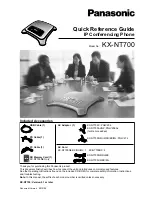
System Functions and Features as of I7.9
Numbering Plan
27
sy
d-
020
0/3.
0
– I7.
9
– 1
1
.2009
2. 2. 5. 5
Virtual terminals
Virtual terminals respond in the same way as analogue internal terminals except
that they
•
do not physically occupy a port as there is no hardware involved,
•
do not require a B channel.
Other properties
•
Virtual terminals are capable of sending and receiving messages via the third-
party CTI interface.
•
A user who has been assigned only one virtual terminal is referred to as a virtual
user.
•
When the caller dials a virtual user he obtains the ring-back tone or the busy
tone (if the user is already in a call).
•
Virtual users belong to the group of users with their own DDI number, the maxi-
mum number of which is restricted by the system limits per system.
•
Virtual users have their own recall time, which can be set throughout the system.
It is used if no recall time is defined in the user setting (see also
).
Application examples:
•
During an explicit call transfer without prior notice to a virtual user a call can be
parked for up to 900 seconds and then fetched using *86 <User No.>.
•
To integrate a PISN user into a user group, it is possible to accept a virtual user in
the user group using a CFNR to the PISN user.
•
In third-party CTI applications virtual users can be used to send and receive mes-
sages.
















































